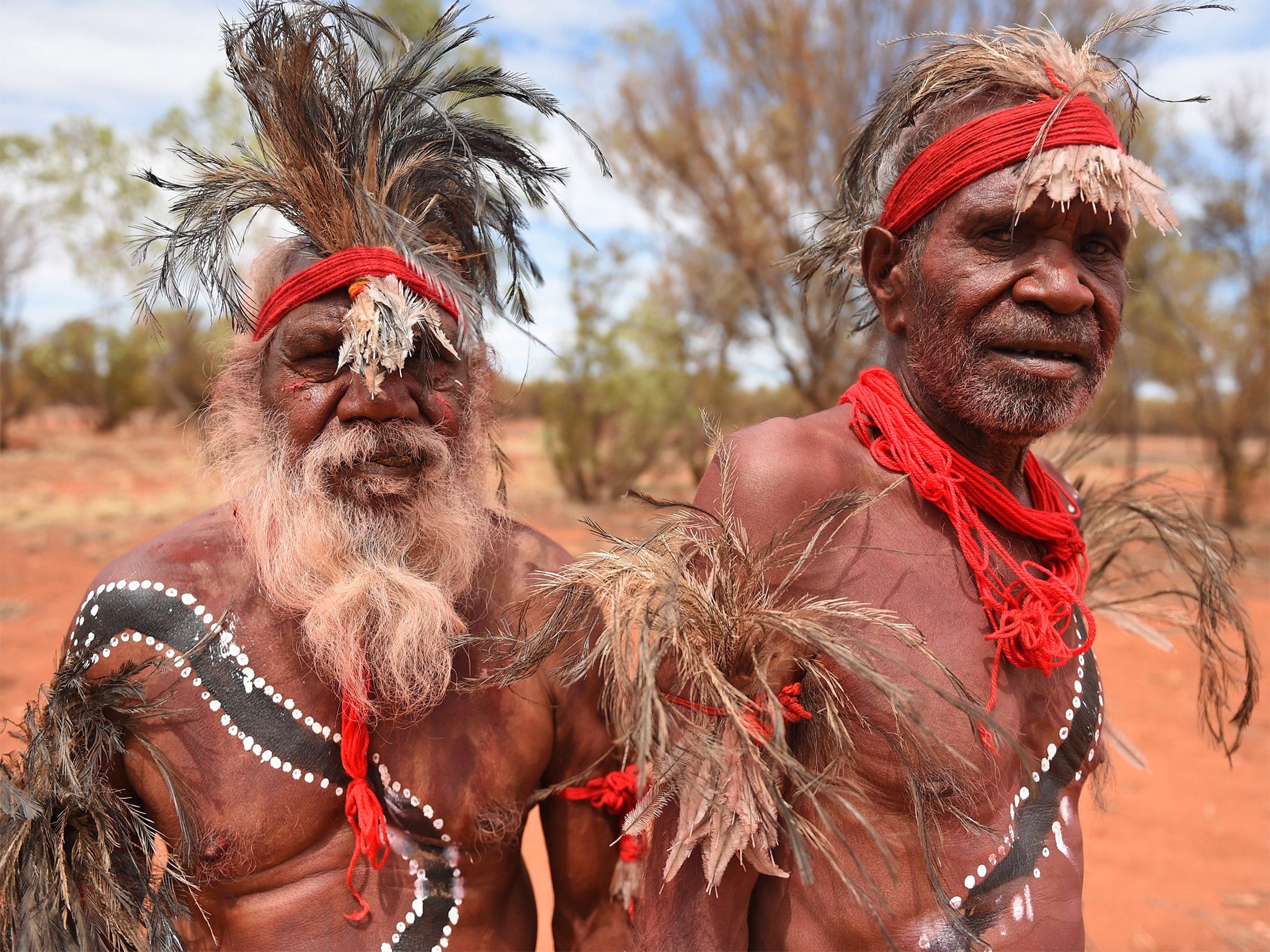Indigenous Australians the most ancient civilisation on Earth, DNA testing confirms
Their origins date back more than 50,000 years, according to the research

Your support helps us to tell the story
From reproductive rights to climate change to Big Tech, The Independent is on the ground when the story is developing. Whether it's investigating the financials of Elon Musk's pro-Trump PAC or producing our latest documentary, 'The A Word', which shines a light on the American women fighting for reproductive rights, we know how important it is to parse out the facts from the messaging.
At such a critical moment in US history, we need reporters on the ground. Your donation allows us to keep sending journalists to speak to both sides of the story.
The Independent is trusted by Americans across the entire political spectrum. And unlike many other quality news outlets, we choose not to lock Americans out of our reporting and analysis with paywalls. We believe quality journalism should be available to everyone, paid for by those who can afford it.
Your support makes all the difference.Indigenous Australian claims to be the most ancient continuous civilisation on Earth have been backed up by the first extensive testing of their DNA.
Their origins date back more than 50,000 years to the Old Stone Age, according to the research.
Scientists took DNA samples of modern populations in Australia to find the genetic traces of the ancient civilisation and reconstruct their journey out of Africa 72,000 years ago.
The new study shows the original explorers first reached a prehistoric supercontinent called Sahul about 58,000 years ago.
This huge landmass included present day Australia, New Guinea and Tasmania, before they were separated by rising sea levels.
The research, published in Nature this week, found Indigenous Australians and Papuans met and interbred with a mysterious race of humans whose fossil remains have never been found.
Study lead Professor Eske Willerslev said: "We don't know who these people were, but they were a distant relative of Denisovans, and the Papuan/Australian ancestors probably encountered them close to Sahul."
Previous studies have found that modern day humans have a small percentage of Neanderthal DNA due to interbreeding.
Similarly, this unknown race of human has contributed about four per cent of the Indigenous Australian genome.
The findings also seems to settle a long running argument between experts as to how the first humans left Africa.
Some believe non-Africans are descended from a small number of explorers who left the continent, but others maintain there were a series of waves of migrants.
The new research backs the single migration theory, and shows that this original group splintered as it spread across the globe.
Willerslev's findings show that modern day Indigenous Australians can trace their origins right back to the group who reached Sahul, where they remained completely isolated until about 4,000 years ago.
“They are probably the oldest group in the world that you can link to one particular place," says Willerslev.
There was also revealed to be huge diversity in the genetic makeup of Indiginous peoples in Australia itself.
Co-author Dr Michael Westaway said: "That great genetic diversity in Aboriginal populations reflects the huge amount of time they have occupied the continent."
Join our commenting forum
Join thought-provoking conversations, follow other Independent readers and see their replies
Comments